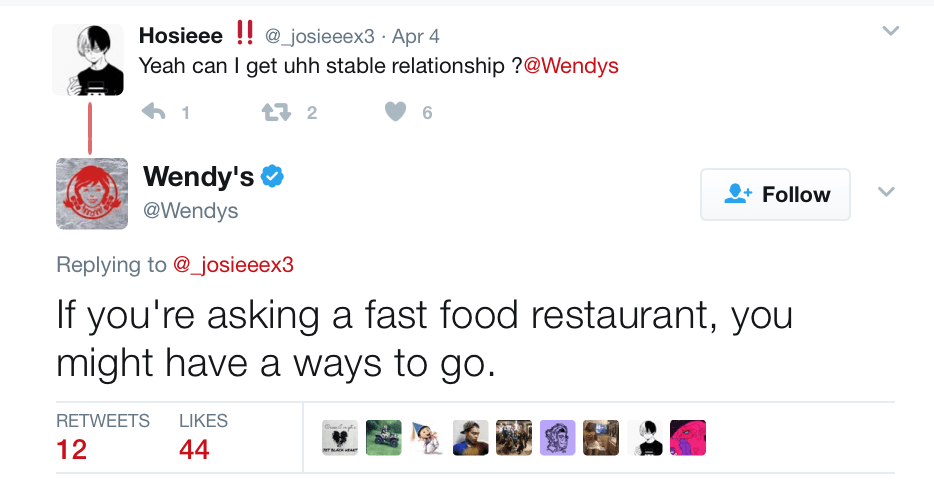On the night of the most recent Super Bowl between the Patriots and the Rams, the delicious orange-citrus flavored beverage SunnyD tweeted, “I can’t do this anymore.” This appeared to be in reference to how slow and boring the game was, but responses from all over Twitter and social media, with many from other major companies, immediately started responding back to the drink company.
Other big brands on the platform offered things like hugs and tissues. Little Debbie, in a since-deleted tweet, sent out tips on how to address clinical depression. All because if you took the original sentence out of context, it almost seemed as if the drink was potentially suicidal. So naturally, folks on social media wanted to help!
As you may have assumed, some outrage quickly followed, with many companies and other twitter users publicly questioning the ethical boundary crossed when brands use depression as a social media marketing strategy. By now, this type of outrage is simply a part of the expected cycle; what’s harder to figure out is why, and how did we get here?
Why are real humans searching for, or expecting meaning from a brand’s social media presence? What does it mean that a culture, particularly a young one, is so desperate for help and answers that it will actually seek out life information from a brand’s social media page?
Plenty of experts will attest that It’s become increasingly important for a brand to behave more and more like a real human individual in order to help them stand out in an ever-growing space. It helps them get attention and increase engagement, which is what marketing and advertising is all about, after all. In 2019, we’re definitely not running out of examples of brands trying their hardest to stand out in a crowded space by acting this way on social media. Twitter in particular.

We (as consumers) love it, are entertained by it quite a bit (countless lists of the “funniest brands to follow on Twitter”), laugh at it, and complain or critique it. Think about how many people actively look to Wendy’s Twitter account as a “role model” for social media snark. It is all absurd, but it’s just the way of the world right now. For marketers, it’s an increasingly tricky thing to navigate. Twitter is a medium that’s held up by so much irony and snarkiness, that sometimes it’s hard to distinguish what’s sincere from what isn’t. But, In order for these sorts of brands to differentiate themselves, they have to be able to stand out and not offend at the same time… which is a tough thing to do – especially these days.
Sure, brands can stand out in other ways. But, short of taking a stand on a big social issue with a major multi-million dollar ad campaign, this is next best way it seems (much cheaper as well). Using Twitter or other social platforms well as so many brands are doing – in order to provoke a dialogue – demands much quicker thinking, or much less thought that the traditional route. Really, it’s a type of spontaneous and improvised marketing that’s all about timing and wittiness.
A brand has to be able to sound appropriate on the platform they are using, and speed plays a huge role in this. To be seen as cool, brands have to continually straddle the line between not really caring what they say, and avoiding a PR nightmare for their words. Brands that can hit the right balance see an engagement much more personal than the type brands previously had with the public before social media. This is a huge driving factor for it all.
Everyone knows that behind every brand’s social account is a person doing the posting (or sometimes an automated bot – lame!). But, part of the problem with brands becoming more and more human on Twitter, and on social media in general, is that it can sometimes be unclear if it’s the individual’s voice or the brand’s voice sitting behind the keyboard.
Before social media, there was never such a “human-like” interaction between brands and consumers — where things like an orange drink accidentally hinting at its deep depression were not even heard of. Now, there’s becoming an increasingly visible blurriness between whose tweets we’re reading—the brand or the people behind the brand—and this is surely not the last time, intentional or not, a brand will commodify our sadness, or we as consumers will jump to conclusions about the emotions of the people running a brand’s account. These lines are still being drawn, and it’s anyone’s guess as to how much they’ll be moved in the coming years. But, in the mean time, it will probably get worse before we’re able to finally find the perfect balance. Until then, we will continue checking in on out favorite brand social media feeds to see the latest “beef” and witty “clap backs” being thrown out on the web.
